“Singer” is a household name among many sewing enthusiasts, mainly because the sewing machine brand has been around for decades. The company has survived this long because it produces high-quality sewing machines.
Some of these sewing machines have been passed down from one grandma to the next, which are priceless, especially to people who consider them sentimental. Other than a singer machine’s function, there is much more to learn about them, especially their history and value.
Looking to find the value of your old sewing machine? We have all the information you need to help you gauge an antique singer sewing machine’s value and price range.
Table of Contents
About Singer
Singer company was founded in 1851 by Isaac Merritt Singer and has been at the forefront in creating innovative sewing machine designs ranging from the vibrating shuttle to the electric-powered domestic machines we have.
Pioneer singer machines became famous because their vertical, straight needle design was easier to use, and the sewing machine designs kept improving over the years.
Because of its constant innovations, this company has forged its name as one of the largest sewing machine retailers worldwide. Some useful design corrections include introducing a support table, treadle, and the traverse shuttle.
Isaac Merritt Singer had strong business acumen, and because sewing machines were pricey, he decided to introduce an installment payment plan to help drive singer sewing machine sales. This decision made for affordable machines, which increased their sale in households.
Singer Company also introduced door-to-door sales campaigns under Singer’s leadership, which increased its products’ visibility. The company also ensured a constant supply of newer machine models to improve their function.
The History of Singer Sewing Machines
| Year | History |
| 1851 | Produced the first Singer sewing machine |
| 1856 | Turtle Back for domestic use |
| 1859 | Letter A Family model |
| 1865 | The New Family model (Fiddle Base) |
| 1870 | The Medium Model |
| 1880 | The Industrial Flying Dutchman |
| 1895 | Class 15 model |
| 1908 | Released the 66 Model |
| 1921 | Released the 99 Model |
| 1933 | Released Model 221 with gold decals and a faceplate decorated with scrollwork |
| 1939 | Released 201 and 201K models |
| 1947 | Released the Blackside |
| 1949 | Released the 301 and 95. The 95 model was efficient in that it could make 4000 stitches in one minute |
| 1952 | Released the 206 which could make zigzag stitches |
Is My Singer Sewing Machine Antique?
Most people believe every old thing is an antique, but your old Singer sewing machine needs to be at least 100 years old to be considered an antique, and anything less is considered vintage.
Sewing Machine Serial Number
You can find out how old your singer machine is by calling Singer’s toll-free line at 1-800-474-6437. Each Singer sewing machine contains a unique serial number, and all antique models released before 1900 consist of serial numbers consisting only of numbers.
Newer models contain serial numbers consisting of both letters and numbers. Another way to figure out your sewing machine’s age is by visiting the Comprehensive List of Serial Numbers for singer machines.
You can find serial numbers in different parts of Singer sewing machines. Some popular places to look include:
- Under the machine
- Below the handwheel
- On the front or side of the machine
- On your sewing machine’s right-hand side, especially for treadle sewing or electric models.
- On your machine’s bearing
- On the front panel above the needle
- On the sewing machine’s bed or throat plate
Remember that these machines are very old, and some of these serial numbers may have faded. You can determine the model by identifying popular features if this is your case.
We will cover some popular Singer antique models to help you identify some features that represent them.
Badge
Singer sewing machines produced between 1875 and 1951 have a brass plate engraved with the Singer logo, accompanied by the words “The Singer Manufacturing Co.” Models released before 1885 have badges containing the words “New York.”
The Singer logo consists of two crossed needles in the background, an embossed shuttle, and a bobbin. This knowledge is significant because newer machines had a simpler logo with a red “S” in 1960.
Older singer machines came in gold badges, some of which had black decorative rims. Some models came with more unique badges that contribute to their uniqueness, increasing their value.
Other Ways to Identify Antique Singer Sewing Machines
- Small serial numbers belong to old Singer sewing machines.
- Some models consist of two serial numbers. Go for the largest.
- After the 19th century, sewing machine serial numbers came with a prefix.
- Some sewing machines came with different decals and unique finishes depicting where they were constructed.
Popular Antique Singer Sewing Machine Models
Singer company has produced many antique singer sewing machines, but some were more popular than others. We will cover the popular designs created before 1900.
For instance, in 1885, Singer started producing sewing machines with the vibrating shuttle. The electric sewing machine was introduced in 1889. Popular antique models include:
Patent Model No. 8.294,185 Sold $249
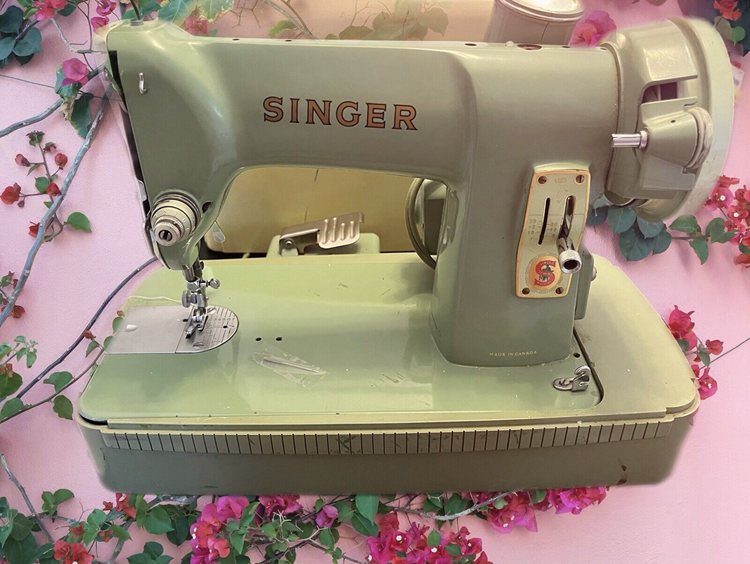
- This was Singer’s first machine. Its popular features include the foot pedal, packing crate, and supporting table.
- The foot pedal attracted many customers because previous sewing machines had a hand crank, making sewing a challenge.
- This machine’s vertical press also held the fabric in place as the needle passed through.
The Turtle Back Model
The Turtle Back debuted in 1856 and was designed for domestic use. This sewing machine improved the pioneer model and included features such as the vibrating overhanging shaft and the leather belt that facilitated the drive wheel’s movement.
The vibrating overhanging shaft supported the rocking treadle, piston shuttle, driving wheel, and needle.
The Turtleback is a rare find and is one of the most popular models among antique collectors.
The Letter A Family Model
This model was released in 1859 and is quite durable, mainly because of its heavy metal construction.
The model included a wider foot treadle and was used for a long time because of its durability. Because of their long-lasting nature, it’s hard to find the Letter A family model in good condition.
The Fiddle Base Model
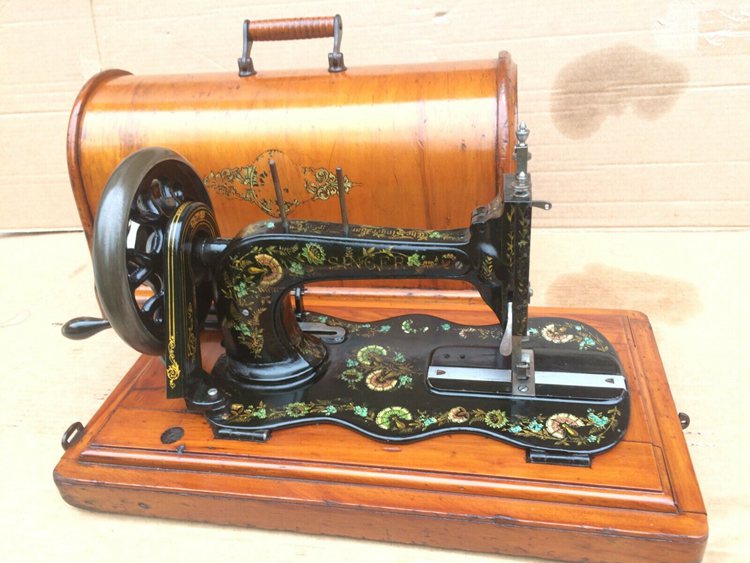
The Fiddle Base model includes notable features such as its gold scroll and lockstitch, enabling tailors to sew through multiple fabrics.
This machine was released in 1865, later renamed the Singer Model 12, and remained on the market for about 40 years.
The Fiddle Base was quite expensive, but most families bought it over the years because it was durable and efficient. The model was created with solid metal, which means you can find some in good working condition at the time.
The Medium Model
The Medium model improved the Fiddle Base and was released in 1867. This model includes a larger space under the arm which helped tailors maneuver larger fabrics easily.
The Industrial Flying Dutchman
Industrial flying Dutchman is more of an industrial model and was released in the 1880s. This sewing machine was designed to trim fabric edges while sewing to help make them presentable.
Singer Class 15 Sold $98
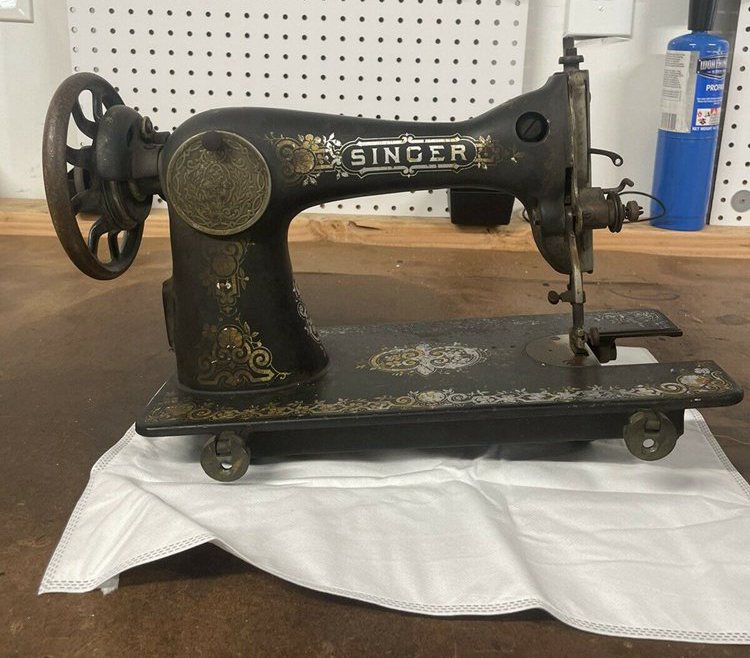
This model was released in 1895 and has remained in production for over a century. The sewing machine has undergone many mechanical improvements and is one of the most successful singer sewing machine models.
The Singer Class 15 was made to improve the New Family Class.
Popular Vintage Singer Sewing Machine Models
Vintage singer sewing machines were released between 1900 and 1960. The Singer company was more established during this time and produced quality sewing machines with durable solid metal interiors.
It produced hundreds of models during this time, the most popular being the Singer 221, 401a, 403a, and 66.
The 66 Model Sold $300
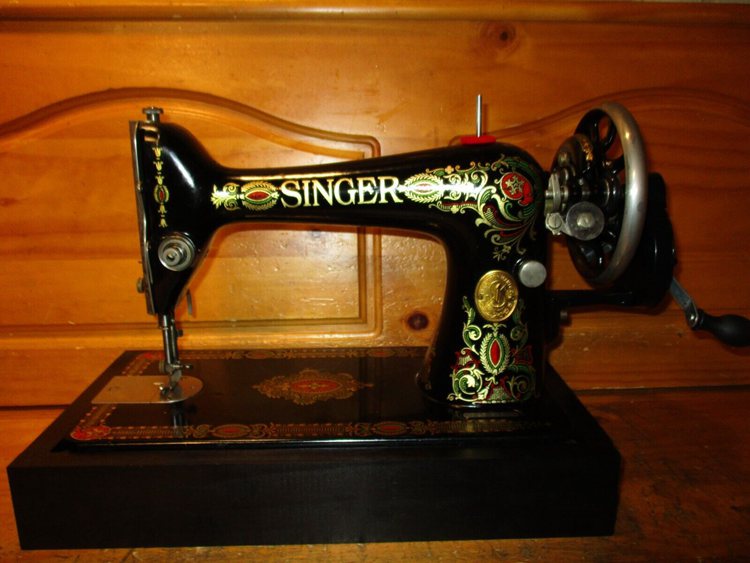
Having been released in 1902, this model started Singer Company’s 20th-century productions. The sewing machine can handle various fabrics, including heavy fabrics like blankets and lighter ones like linen.
The 66 model was quite pricey, but it was a small price considering its durability. The model was produced between 1907 and 1940 and was finally overtaken by 201. The 66 is identical to the 99, except that the latter is smaller.
Singer 221 Model Sold $369
Model 221 is mainly referred to as “Featherweight” and was the company’s greatest invention in the early 20th century. This sewing machine is popular among quilters because it can easily handle thicker fabrics.
The company replaced its heavy steel models with aluminum making the sewing machine more portable.
Accessing the bobbin case in the featherweight became easy, especially because of the flipping-hinged bed extension.
The 221 was later modified and named 222K, fondly referred to as “The Queen of Singers.” This model is a popular collector’s item because those in good condition run well despite their age.
The Slant-O-Matic Models Sold $249
These include 401a and 403a and are unique because they can create the zigzag stitch.
These models were released in the 1950s. The 401a is referred to as the Slant-O-Matic because of its angled needle, making it possible for the tailor to access the needle plate and presser foot easily.
You can create different stitches with these sewing machines because of the cams, which consist of internal discs that can change the position of the needle and presser foot.
Should you Buy an Old Singer Machine?
Buying an old sewing machine can be a good or bad investment, depending on what you’re buying it for. Some collectible old sewing machines are precious because of their functionality and durability and most of them can perform stitches that seem impossible for modern sewing machines.
Determining an Antique Singer Sewing Machine’s Value
Despite being old, every Singer sewing machine model will attract a different price. In most cases, your machine’s value will increase depending on its market availability. Some of these sewing machines were mass-produced, making it easy to find them, significantly reducing their value. Here are some factors sewing machine enthusiasts consider before determining your machine’s value.
Historical Value
The year a particular model was released determines how rare it is. Some of these sewing machines were produced for two years before a new model was released, making them quite rare.
Others were produced for years, so they’re flooded on the market. You can have an earlier, mass-produced model, which will be lower in value, and a mass-produced antique singer sewing machine will be priced between $0 and $100.
Rare Singer sewing machine models have unique features such as elaborate gold scrolls and trademark badges.
The Turtleback and the Fiddle Base are some of the most popular, rare models and can cost thousands of dollars depending on their condition. The Turtleback is rare because it was a “failed” model, so very few are available on the market. Their price ranges from $500- $1500. The Fiddle Base (Singer 12) is still pricey despite being mass-produced because it signifies the technological advancement of Singer sewing machines.
This rare Rare Antique Singer 12k Fiddle base Hand Crank Sewing Machine with wheels decals for instance, sold for US $1,089.93 on eBay.
You can also look at the historical value of the antique sewing machine’s previous owners. Are they historical figures? What are they famous for? Pioneer Singer sewing machines are mostly museum quality and have a higher value.
Sentimental Value
A machine’s sentimental value depends on who owns it and the history behind that ownership. For instance, some of these machines have been in families for generations or are gifts from loved ones.
Collectible Value
This depends on what a collector wants to add to their arsenal. Collectors are quite picky; some look at the history of the sewing machine, while others go for aesthetics.
Location
Antiques are fragile and require certain conditions to be shipped, making shipping costly.
Aside from the sewing machine’s location, consider the collector’s location because some of these antique sewing machines are only valuable in certain locations.
Sewing Machine Condition
Your antique sewing machine falls under four categories: excellent, very good, fair, and poor.
A sewing machine in excellent condition has minor blemishes, but you can tell that the metal construction is well taken care of, and the color is still shiny.
For a machine to be considered very good, it must still be functional and indicate that it was handled with great care but still well used.
Fair indicates that the machine shows more defined scratches and fading, missing accessories, and signs of rust. A fair rating means the sewing machine is legible for possible restoration or repair.
A machine in poor condition is no longer functional and can’t be repaired or restored. All is not lost; there are some usable parts in a write-off that you can use to restore those in fair condition.
Completeness
Antique Singers came with cabinets and other accessories. Your Singer sewing machine will have a higher value if the original cabinet is present and in good condition. The value goes higher if the machine comes with its original accessories and user manual. Most early treadle sewing machines were designed to be housed in wooden cabinets.
A working sewing machine has a higher value regardless of its model number.
Determining the Price of Antique Singer Sewing Machines
There are many ways of determining the price of an antique Singer sewing machine. If you need to find an official value for insurance purposes, then visit a local appraisal company.
Here are places to look to help you set a reasonable price for your antique singer sewing machine.
Sale Value on Online eCommerce Sites
Sites like eBay and Etsy have auction sections for antiques and vintage products. These sites let you browse past and current online sales of these items. Antique sewing machine prices can change dramatically between $50 and $1000 depending on the condition and rarity. These prices fluctuate due to demand.
You can look for the model you have and check for the sale price and how long they’ve been listed. This Antique Singer Red Eye Cast Iron Treadle Sewing Machine Model 66 & Cabinet goes for $400 on eBay. The same model is listed at $250 because it has been repaired.
Another trick would be to list your sewing machine on eBay to attract bidders. Use a low price like $10, and look out for bidders. The highest bid will determine its price.
Local Antique Stores
You can carry your sewing machine to your local antique or thrift store if you don’t trust online stores.
The best way to determine whether your antique sewing machine is valuable is by gauging whether the store will offer to buy it from you.
An antique store needs to make a profit and will most likely underquote the price, double the offer to get the real retail price.
You can also go window shopping at the store without your sewing machine and check whether they have a similar model. Ask for the price and how long it’s been in the store. Like most products, the price reduces significantly the more they stay on the shelf.
Look for Books that Cover Antique Sewing Machines
Antiques are an interesting topic, and your local library may have books covering this topic. You can also find digitized versions of these books and resources online. Examples of helpful books on sewing machines include:
- The Encyclopedia of Early American Sewing Machines by Carter Bays
- Antique American Sewing Machines, A Value Guide by James W. Slaten
- The Handbook of Antique Sewing Machines by Charles Basebase Law
- Antique Sewing Machines by Brian Jewell
- The Encyclopedia of Antique Sewing Machines
谷歌
Google is a powerful resource. Once you determine your sewing machine’s model, use the search engine to look for similar sewing machine listings online and go for a happy medium between the prices.
Where to Buy Antique or Vintage Singer Sewing Machines
The easiest way to find these old sewing machines is to look for credible online sales.
The secret lies in looking for a verified online seller, so you’re assured of a good quality antique sewing machine.
You can also check yard sales, estate sales, auctions, and local antique and thrift stores.
Tips When Buying an Old Sewing Machine
Buying an old sewing machine sounds like an interesting thing to do, but here are things to do before purchasing one.
-
Find Out the Parts of a Sewing Machine
Sewing machines have movable parts that will eventually need replacing. You also need to know parts such as bobbins, bobbin cases, and knee bars for when you need to repair or restore machine parts.
Knowing the parts of a sewing machine is quite easy, especially because of the numerous online resources. You can also learn more from ISMACS website, which includes photos and explanations of what these parts do.
-
Gauge the Sewing Machine’s Condition
Determining a sewing machine’s condition depends on whether you buy it in person.
If you’re physically shopping for these machines, take one for a spin and see whether it will run. Hearing odd sounds as it runs?
Some are old, and antique stores may not allow you to touch them. Look for any traces of rust, cracks, and discoloration.
Does the sewing machine come in a wooden cabinet? Look at the cabinet’s condition. Any roughness or cracks reduce its value.
-
Verify the Serial Number
We have explained where to find the serial number and how to get the model number using it. Verifying the serial number gives you the surety of which sewing machine you’re buying. Singer sewing machines such as the 66 and 99 may look identical to an amateur buyer.
-
Look for Quality
This is relative and will depend on why you need the sewing machine. Some people buy antique sewing machines to use, while others simply collect them.
If purely for aesthetic purposes, ensure the exterior looks great. If you need a functional machine, ensure it works before purchasing it.
Final Thoughts
Singer Company has cemented its name in history by focusing not only on the functionality of its sewing machines but also on reliability, durability, and beauty. Because of their dedication to quality, their sewing machines remain the most sought after even after a century.
The company has also diversified and created innovative sewing machines to cater to the changing needs of its customers.
We hope this guide has provided you with the necessary knowledge to identify antique singer sewing machines and determine their price and value. We would love to hear from you; leave a comment or questions, and we will be happy to reply.

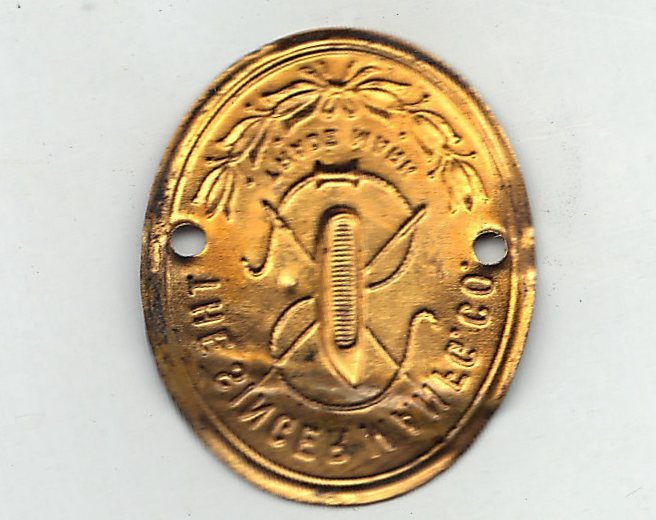
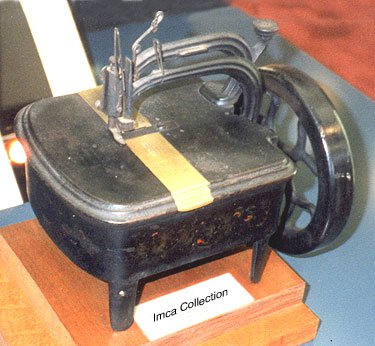
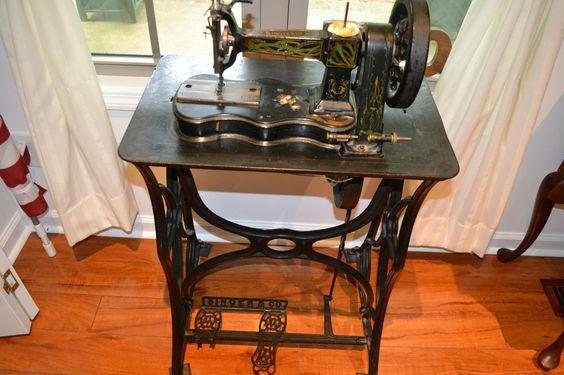
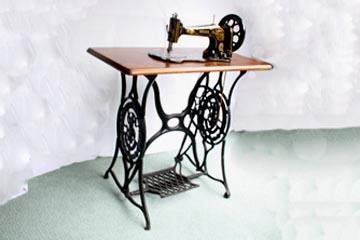
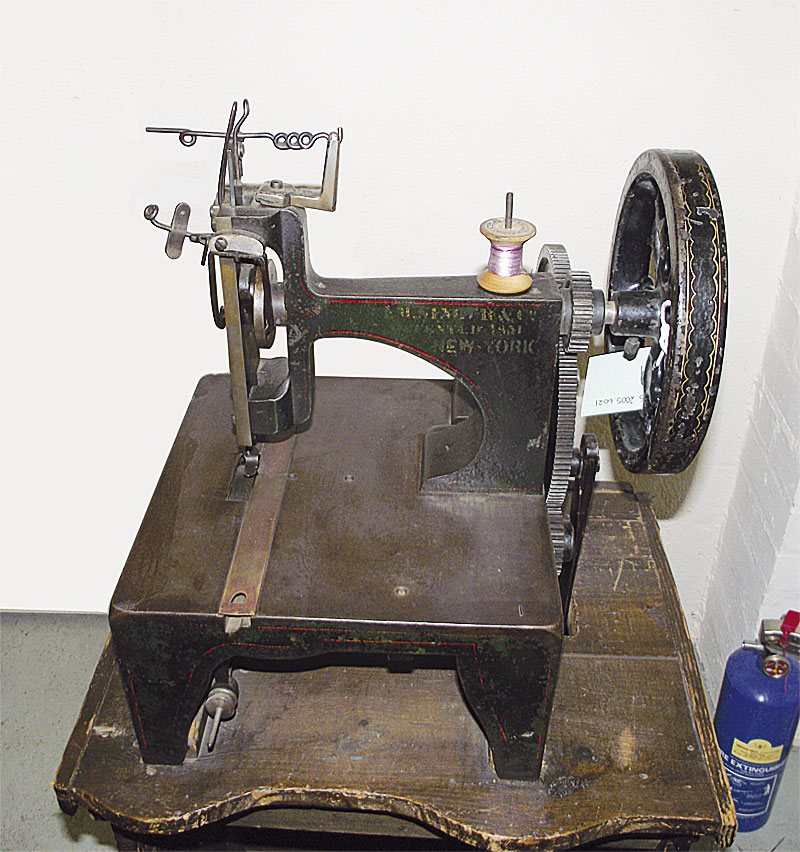
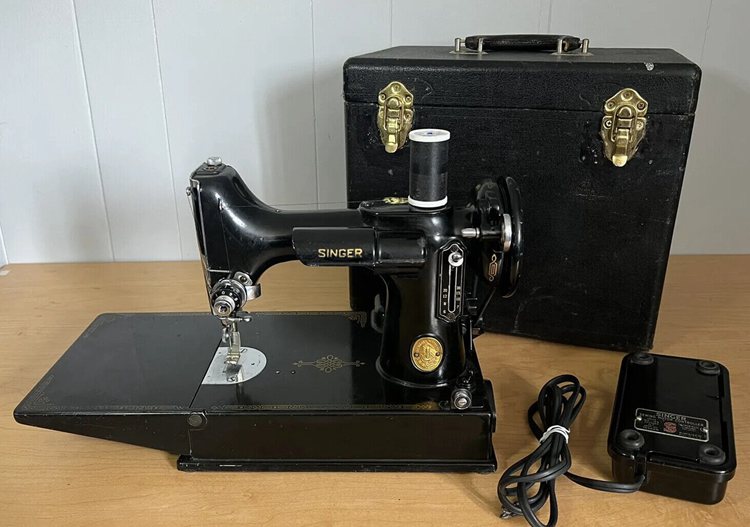
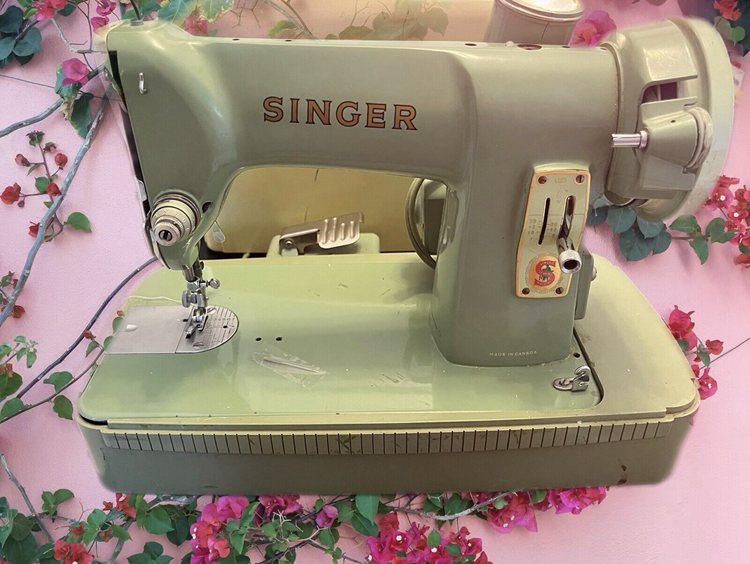




![Where To Sell Antique Furniture In 2022 [Ultimate Guide]](https://www.jacquelinestallone.com/wp-content/uploads/2022/09/Etsy-Your-Place-To-Buy-And-Sell-All-Things-Handmade-600x450.jpg)


